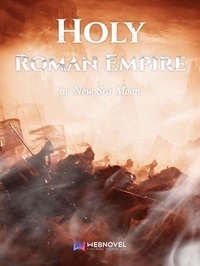The Rise Of Australasia - Chapter 249
Chapter 249: Chapter 229: Landing! Landing!
рlease,reading On ΒΟXΝOVEL.ϹʘM
Portuguese Timor is the second colony occupied by the Kingdom of Portugal in East Asia, and one of Portugal’s crucial strongholds in Asia.
The current population of Portuguese Timor is over 350,000. Ninety percent are indigenous peoples, three percent are other foreign ethnic groups, and less than seven percent are white immigrants from Portugal and Europe.
Portuguese Timor is a small colony with a small population, with just over 20,000 white residents.
However, Portuguese Timor’s economic value is high. Although the Netherlands gradually occupied more than half of the territory, which is the western region of East Timor Island, Portugal still retained its land on the eastern part of East Timor Island.
More importantly, Portuguese Timor, despite only 10,000 square kilometers, contains substantial mineral resources, including gold, manganese, chromium, tin, and copper. The nearby Timor Sea also boasts abundant resources of petroleum and natural gas.
Although not many mineral resources have been discovered, Portuguese Timor is a crucial stepping stone for Australasia, allowing it to control the central zone of the Dutch East Indies.
(vitag.Init = window.vitag.Init || []).push(function(){viAPItag.display(“vi_765923973”)})
If Australasia can control Portuguese Timor, it would have the ability to turn the entire Timor Sea into its inland sea.
Moreover, with Portuguese Timor, it can maintain some control over the western part of Timor Island, which is Java Island.
Ever since the two kingdoms declared war on each other, this war has attracted some attention among Europeans.
Unexpectedly, what was initially merely diplomatic conflict escalated into warfare between two nations.
This can only be attributed to Australasia’s firm stance and Portugal’s refusal to back down.
Major European countries have expressed concern about this war, but in these chaotic times, Europeans are accustomed to war and generally unfazed by it.
At present, Portugal has three colonies in Asia, located in East Asia, Southeast Asia, and India.
But these three colonies share common features- small in size and population, therefore it is impossible to have a large garrison.
This led to the fact that the total garrisons in all Portuguese colonies in Asia are merely over 3,000 in size.
Holding off the onslaught from the Australasian army with just over 3,000 individuals is virtually impossible.
Of course, Alfonso I is not relying on these 3,000 individuals to win the war. Reinforcements from Portugal mainland are already moving. The fastest ones will arrive in no more than a month.
Even before the war started, the Ministry of Defense had detailed plans. Australasia will deploy at least 50,000 individuals, with 10,000 as the vanguard, responsible for swiftly occupying Portugal’s colony in Southeast Asia – Timor.
(vitag.Init = window.vitag.Init || []).push(function(){viAPItag.display(“vi_765923973”)})
The remaining 40,000 will be divided into two parts: a portion will act as the main force and will land on Portugal’s other Asian colonies after the vanguard successfully takes over Timor.
The remaining reserve force will temporarily stay in Australasia in a state of combat readiness. On one hand, it can prevent possible enemy landings in Australasia. On the other hand, as a reserve force, it can support the frontline in emergencies.
Of course, capturing Portuguese Timor rapidly and then leveraging it as a stepping stone for landing in Portugal’s other colonies in East Asia and India is critical.
After losing three colonies successively, the Portuguese government will have to consider the repercussions of continuing the war.
On August 8, 1907, at 4 pm, at Marlborough Port.
After the Australasian Government declared war on Portugal, the First Defense Division was prepared to take a transport ship for a beach landing on East Timor Island.
Brigadier General of the First Division is Silvio Lonnie Rodlin, a competent commander who advocates offensive firepower.
However, at this point, Silvio Lonnie Rodlin looked somewhat hesitant, his resolute face clouded with concern.
Of course, Silvio Lonnie Rodlin was neither fretting over defeating the Kingdom of Portugal nor fearing the imminent war.
What troubled Silvio Lonnie Rodlin was actually Arthur’s order to minimize casualties as much as possible and curtail Portugal’s vitality in Timor, including Portuguese influence.
Weakening Portugal’s vitality is straightforward, isn’t it about killing as many Portuguese soldiers as possible?
Casuallties among soldiers can be reduced with careful planning. This can be achieved by laying down heavy fire before launching an attack, trading increased firepower to enhance the survival rate of soldiers, and minimize casualties.
(vitag.Init = window.vitag.Init || []).push(function(){viAPItag.display(“vi_765923973”)})
But how can they curtail Portuguese influence in Timor? They couldn’t possibly slaughter Portuguese civilians in Timor, could they? Although doing so can weaken Portuguese influence, Australasia would then be perceived as the villain in this war.
Turning a supported war into a condemned one is a losing proposition from any perspective.
Shaking his head slightly, General Silvio Lonnie Rodlin decided to temporarily set his worries aside and concentrate on capturing Portuguese Timor first.
Unless it is a national emergency, Arthur’s Guard Division is unlikely to be deployed to war.
It represents Arthur’s last card, and it is also currently the best-equipped and best-trained army in Australasia.
This is why the First Defense Division gets to be the vanguard. Apart from the Guard Division, the First is Australasia’s oldest, most trained unit, whose combat capabilities are on par with Germany’s elite soldiers.
To uphold the tradition of prioritizing firepower, General Silvio Lonnie Rodlin ordered all artillerymen to bring more than double their ammunition. He also requested assistance from the navy.
Marlborough is a small port city in eastern Queensland State, an ideal boarding location for the landing party due to its small scale.
Launching an operation under the watchful gaze of a metropolis like Sydney would inevitably alert the Portuguese ahead of time.
Although it would not significantly affect the war’s layout, the prepared Portuguese would definitely inflict more casualties on the Australasian Army.
The distance from Marlborough to Portuguese Timor is not short; even if the fleet travels at full speed, it would take at least several hours.
This has resulted in the fleet nearing Portuguese Timor at around six in the morning before the break of dawn.
(vitag.Init = window.vitag.Init || []).push(function(){viAPItag.display(“vi_765923973”)})
On top of this, it is currently the winter season in the Southern Hemisphere. Although Portuguese Timor is not too cold, the dim predawn light provides the perfect opportunity for a sneak attack.
The soldiers of the First Division have had a long rest on the transport ship, and although the quality of sleep may not be the best, they are full of anticipation.
“Action!” commanded General Silvio Lonnie Rodlin, and the soldiers of the First Division promptly disembarked from the transport ship in small boats, making a beach landing.
At six in the morning, East Timor Island was still pitch dark. Even when all the soldiers of the First Division had successfully landed on East Timor Island, daylight was just about to break.
The real reason the First Division encountered no resistance, in fact, is because the landing site they chose was located in the Dutch-controlled area.
The Portuguese may have been prepared, enforcing security measures along the coast. But who would have expected that Australasia’s landing site would be in the Dutch-controlled area?
The Netherlands is different from Portugal; it has numerous colonies throughout Southeast Asia, and the Dutch East Indies consist of many large and small islands.
This has created an obvious problem for the Netherlands. They simply cannot fully control the Dutch East Indies, given their size.
Many of the smaller islands and desolated regions within the Dutch East Indies are significantly beyond their control.
Although the west side of East Timor Island was acquired through competition between the Netherlands and Portugal, the Dutch’s main attention on the island is focussed on the city in the west.
After landing in the middle of East Timor Island, General Silvio Lonnie Rodlin issued forthwith an order for all soldiers to march eastward, aimed straight for Dili, the capital of Portuguese Timor.
Portuguese Timor is home to more than twenty thousand Portuguese. The vast majority reside in Dili, the capital of Portuguese Timor.
(vitag.Init = window.vitag.Init || []).push(function(){viAPItag.display(“vi_765923973”)})
Which means, controlling Dili is tantamount to controlling the entirety of Portuguese Timor.
Of course, to guard the most important and only city in Portuguese Timor, there is a Portuguese garrison nearby of about one thousand soldiers, and approximately two thousand indigenous soldiers.
Hence, as the soldiers of the First Division drew near to Dili, they encountered this peculiar sight.
Defensive fortifications of a certain scale had already been built around Dili, including long stretches of trenches and positions.
Under the supervision of a few Portuguese soldiers, many indigenous peoples were working there. It could be seen that the vast majority of these fortifications were built by the indigenous peoples.
At dawn, the figures of a majority of the Portuguese troops weren’t clear. But they were probably still resting. After all, who would have thought that the Australasian Army would arrive at Dili on the second day after proclaiming war?
General Silvio Lonnie Rodlin immediately instructed his soldiers to halt their advance and conceal their presence, then ordered all the artillerymen to set up temporary positions to bombard the Portuguese and indigenous peoples in front.
Perhaps due to the fatigue of not sleeping all night, the attention of the Portuguese soldiers was focused on the indigenous peoples. The soldiers occasionally interchanged phrases, and then lashed out at the indigenous peoples nearby.
The indigenous peoples had it even worse. Any slight pause in their actions would be met with the ruthless shouts of the Portuguese and even lashes, making it impossible for them to be alert enough to detect the presence of the Australasian soldiers.
Moreover, since daylight had not completely broken, the First Division was given yet another layer of protection. Even when the artillery’s makeshift positions were set up, the Portuguese failed to detect anything amiss.
Receiving the artillerymen’s report, General Silvio Lonnie Rodlin nodded in satisfaction. He eyeing the Portuguese hundreds of meters away coldly and commanded, “All artillery units, aim at the enemy on the position, indiscriminate bombardment!”
What General Silvio Lonnie Rodlin referred to as indiscriminate bombardment was in fact area bombing.
(vitag.Init = window.vitag.Init || []).push(function(){viAPItag.display(“vi_765923973”)})
This method was highly reliant on the consumption of shells, which in turn burned through military expenses.
But for the rather extravagant Australasians, trading ammunition expenditure to reduce personnel casualties was a win-win deal.
The First Division was equipped with the CA-1 Machine Gun, the M1897 type 75mm field gun, and the GA1906 Model 105mm Semi-Automatic Cannon.
The common feature of these three guns was their semi-automatic artillery technology.
Although this would also increase the consumption of shells, the boost to firepower was substantial.
By virtue of these three semi-automatic guns, and the extra shells the artillerymen were to carry as instructed by General Silvio Lonnie Rodlin.
One of the reasons why General Silvio Lonnie Rodlin wasn’t worried about logistics consumption was Arthur’s promise.
Arthur had specially instructed General Silvio Lonnie Rodlin before the army set off; to fight freely without having to worry about logistical costs.
Because military factories had already produced a large number of spare bullets and ammunition and the Australasian fleet would quickly deliver these supplies to the frontline.














